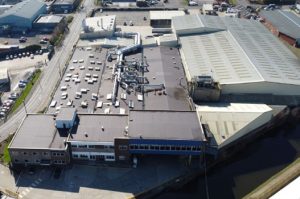The Power of Collaboration: Working Together for a Sustainable Future

The world faces massive sustainability challenges, from climate change to environmental destruction to social and economic inequality, and these complex issues require coordinated, collaborative action across sectors and industries. When diverse stakeholders come together to tackle shared problems, they can make meaningful progress in ways that individual organisations can’t.
Here, we’ll showcase inspiring examples of cross-sector partnerships that are moving the needle on sustainability, and the need for collaboration in combating this problem. From corporations partnering with non-profits to joint initiatives between the public and private sectors, collaboration is essential to driving innovation and scaling impact. By pooling their resources, expertise and influence, these unlikely allies are showing that cooperation can triumph over competition when it comes to building a better future.
What are the Benefits of Collaboration?
Collaboration across sectors and industries unlocks immense potential for driving sustainability that organisations simply cannot achieve alone. When diverse stakeholders pool their resources, expertise and influence, they can tackle complex challenges from multiple angles.
Partnerships build trust and shared understanding, allowing collaborators to align around common goals. They also spark innovation by combining different perspectives and strengths. Collaboration enables participants to amplify their impact at scale, capitalising on synergies and partnerships for wider reach.
By working together, businesses, government agencies, non-profits and other groups can increase funding, technical skills and public awareness for sustainability initiatives. Most importantly, cross-sector collaboration generates the holistic, systemic solutions that are urgently needed to build a just, equitable and regenerative future. While differences will undoubtedly remain, embracing diversity of thought and uniting behind shared priorities is key to addressing today’s sustainability crises effectively.
Business-Business Partnerships
More and more, companies are realising that collaborating with industry peers can accelerate sustainability efforts. Partnerships between businesses allow them to pool resources, expertise and influence to move the needle on shared priorities.
One example of this type of partnership is the Ellen MacArthur Foundation partnering with businesses such as H&M and Unilever, to encourage them to adopt circular economy practices and reduce their waste. Transferring expertise from one organisation to another enables more businesses to adopt sustainable practices by filling those all-important knowledge gaps.
When brands partner up for a mutual cause, both benefit from enhanced sustainability credentials and the opportunity to engage customers around full-lifecycle product responsibility. Other wins include reducing waste, meeting recycled material usage goals and boosting innovation. This commercial collaboration advances closed-loop production, material recovery and tech upcycling – all critical circular economy principles.
One notable online business platform, MPB, is firmly committed to the circular practice of reusing and upcycling. Specialising in the sale of used camera and video equipment, they successfully recirculate 500,000 items annually. Companies focused on extending product life cycles by facilitating resale and refurbishment of used goods help by handling secure logistics and bringing credibility through customer reviews, warranties and authentication safeguards. As reuse models grow, working with established players will accelerate sector-wide adoption.
Business and Non-profit Partnerships
In addition to collaborating with industry peers, businesses are increasingly teaming up with non-profit organisations to advance sustainability and share resources. These partnerships allow both parties to maximise their strengths while working towards a common purpose, achieving bigger goals and raising awareness to a wider pool of people.
A leading example is the partnership between Starbucks and Conservation International that began in 1998. By working together, the companies aim to ethically source coffee and promote farmer well-being in coffee-growing regions. This collaboration combines Starbucks’ sourcing infrastructure with Conservation International’s expertise in environmental protection and community engagement.
Through joint programmes to train farmers on sustainable practices, develop reforestation projects and provide loans to farming cooperatives, the partners are generating shared value. Farmers earn more stable incomes, strengthening the secure supply of high-quality coffee beans; Starbucks reinforces its responsible sourcing commitments to customers; and Conservation International expands its conservation impact in coffee-origin areas like Mexico and Indonesia.
This mutually beneficial partnership exemplifies how business and non-profit collaboration can positively impact people, profit and the planet. Both sectors bring distinct but complementary strengths to the table and such cross-sector relationships enable partners to scale initiatives, leverage funding, strengthen credibility and drive transformative change.
Cross-Sector Collaboration
Solving complex sustainability challenges requires diverse groups working together across the public, private and non-profit sectors. Cross-sector collaboration brings a holistic perspective that unites stakeholders behind common goals. One example of this is electronic waste (e-waste) recycling initiatives. E-waste refers to discarded electronics like computers, mobile phones and TVs that contain hazardous materials. When electronics are not disposed of properly, these materials can pollute the environment and harm human health.
To tackle this issue, businesses, non-profits and governments are collaborating on e-waste recycling programs. Nationwide and local authorities create e-waste legislation and collection infrastructure. Non-profits run public education campaigns on e-waste hazards and recycling options. Other collaborative benefits include cost savings, technical knowledge exchange, access to funding and alignment around recycling policies.
By bridging silos and embracing shared interests, unconventional alliances are advancing sustainability across industries. These partnerships demonstrate that cooperation can triumph over competition when it comes to addressing shared challenges. When purpose overrides conventional divides, diverse groups can align around shared sustainability goals for the collective good.
The Future of Collaboration
Current cross-sector partnerships only scratch the surface of collaboration’s potential to drive sustainability. Exciting trends point to expanded partnerships and collective impact initiatives in the future. We will see more collective action networks mobilising to address specific issues, such as coalitions of competitors forming industry alliances to tackle carbon emissions or set sustainability standards.
Partnerships between cities to share solutions and accelerate climate action will also increase. In these instances, technology needs to be leveraged to connect partners and share data in new ways. Blockchain, IoT sensors and cloud computing enable collaboration through transparent supply chain monitoring, emissions tracking and resource planning.
The businesses of tomorrow will be defined by radical openness – collaborating across industries, with governments and communities for systemic transformation. No single entity can create the change we need, but through cooperation, we can build flourishing, resilient communities and industries.








